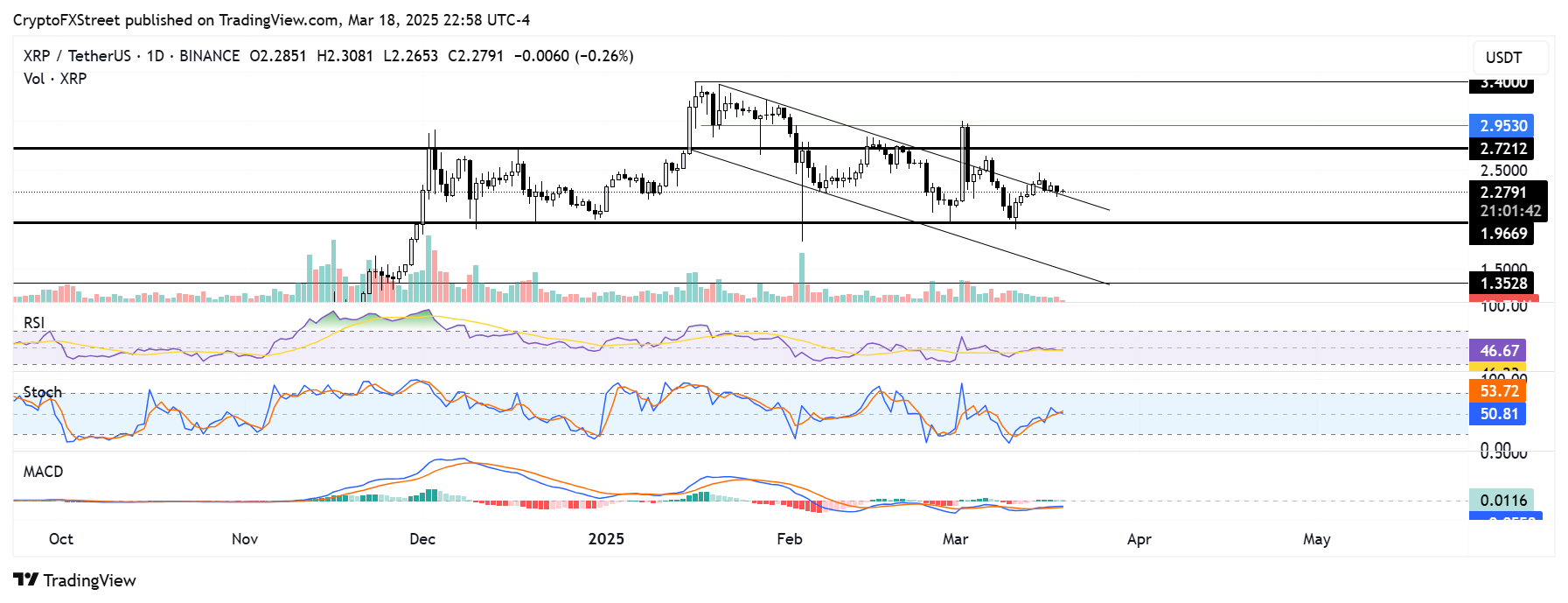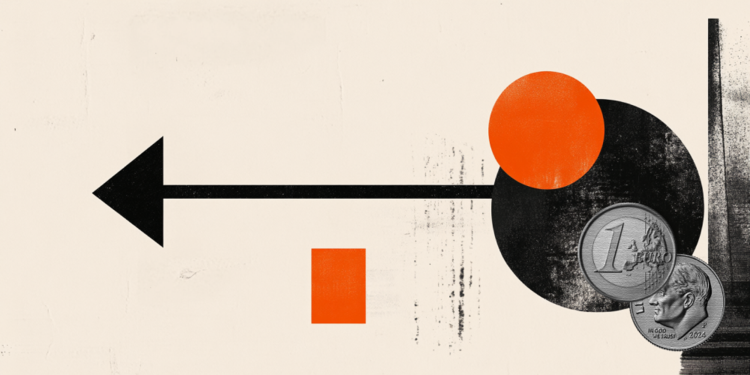- XRP open interest and funding rates have remained largely negative in recent weeks.
- Investors remained calm despite the high bearish sentiment in the futures market, likely due to their large profits.
- XRP could flip to a bullish momentum if it holds firm the upper boundary of a descending channel.
Ripple’s XRP declined by 1% on Tuesday, as on-chain and futures data reveal the impact of the recent market downturn on its investors.
XRP’s high-profit ratio has helped dilute its price decline
XRP futures open interest (OI) has remained largely flat since the market crash in early February. The remittance-based token has shed 33% of its OI between February 1 and March 18, per Coinglass data.
Open interest is the total amount of outstanding contracts in a derivatives market. A decline in OI signifies dominant risk-off sentiment among traders.

XRP open interest. Source: Coinglass
Also, XRP funding rates have mostly been negative in recent weeks, indicating that most traders are opening short positions following the wider crypto market’s consolidation.
Funding rates are periodic payments between traders holding long and short positions to keep the price of perpetual futures contracts on par with the underlying asset they track.
Despite XRP’s derivatives market indicating heightened bearish sentiment, its price decline has been low compared to most top crypto assets. While Bitcoin (BTC), Ethereum (ETH) and Solana (SOL) are down on the weekly timeframe, XRP managed to pull a 3% gain.
A potential reason for the low price decline is that XRP investors — especially long-term holders (LTH) — are still up on their investments by an average of 233%, per Santiment data.
The Dormant Circulation metric, which measures the movement of previously idle tokens, shows that most of XRP’s recent distribution comes from coins that are 1 year old and lesser.
%20%5B03.57.14,%2019%20Mar,%202025%5D-638779498505437550.png)
XRP dormant circulation. Source: Santiment
Meanwhile, the conclusion of SEC vs Ripple’s legal battle could be the catalyst to switch XRP toward a bullish momentum following reports of both parties nearing an agreement.
XRP battles to hold key support level
XRP sustained $7.40 million in futures liquidations in the past 24 hours, per Coinglass data. The total amount of long and short liquidations is $5.15 million and $2.25 million, respectively.
The remittance-based token is struggling to hold the upper boundary of a descending channel since breaking above it over the weekend. It is retesting the channel’s upper boundary support for a third consecutive day.

XRP/USDT daily chart
If XRP holds the descending channel’s upper boundary, the next key resistance is $2.72. A move above $2.72 could send XRP to tackle its seven-year high.
The Relative Strength Index (RSI), Stochastic Oscillator (Stoch) and Moving Average Convergence Divergence (MACD) are testing their neutral levels. A firm crossover above their neutral levels will indicate a switch toward dominant bullish momentum and potentially boost XRP’s price.
A daily candlestick close below the support near the $2.00 psychological level will invalidate the thesis and send XRP toward $1.35.
SEC vs Ripple lawsuit FAQs
It depends on the transaction, according to a court ruling released on July 14, 2023: For institutional investors or over-the-counter sales, XRP is a security. For retail investors who bought the token via programmatic sales on exchanges, on-demand liquidity services and other platforms, XRP is not a security.
The United States Securities & Exchange Commission (SEC) accused Ripple and its executives of raising more than $1.3 billion through an unregistered asset offering of the XRP token. While the judge ruled that programmatic sales aren’t considered securities, sales of XRP tokens to institutional investors are indeed investment contracts. In this last case, Ripple did breach the US securities law and had to pay a $125 million civil fine.
The ruling offers a partial win for both Ripple and the SEC, depending on what one looks at. Ripple gets a big win over the fact that programmatic sales aren’t considered securities, and this could bode well for the broader crypto sector as most of the assets eyed by the SEC’s crackdown are handled by decentralized entities that sold their tokens mostly to retail investors via exchange platforms, experts say. Still, the ruling doesn’t help much to answer the key question of what makes a digital asset a security, so it isn’t clear yet if this lawsuit will set precedent for other open cases that affect dozens of digital assets. Topics such as which is the right degree of decentralization to avoid the “security” label or where to draw the line between institutional and programmatic sales persist.
The SEC has stepped up its enforcement actions toward the blockchain and digital assets industry, filing charges against platforms such as Coinbase or Binance for allegedly violating the US Securities law. The SEC claims that the majority of crypto assets are securities and thus subject to strict regulation. While defendants can use parts of Ripple’s ruling in their favor, the SEC can also find reasons in it to keep its current strategy of regulation by enforcement.

























